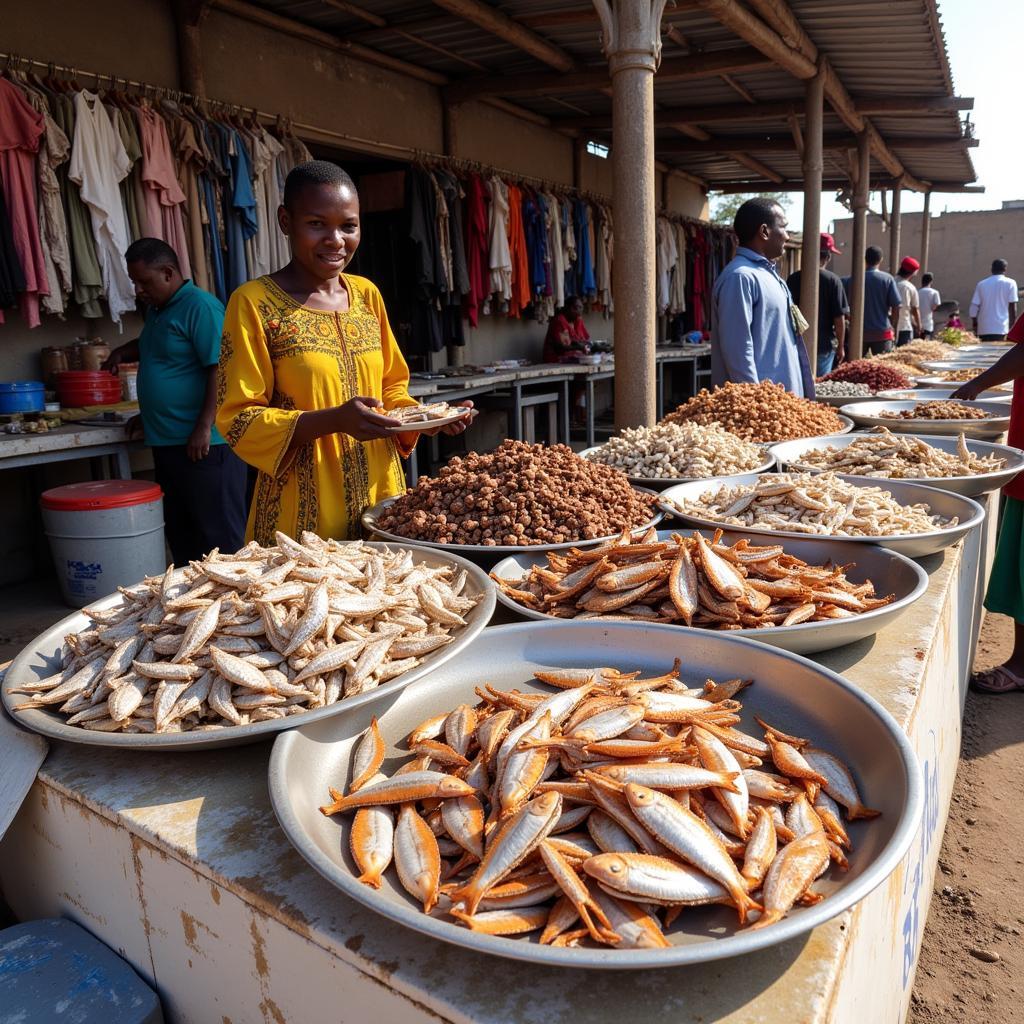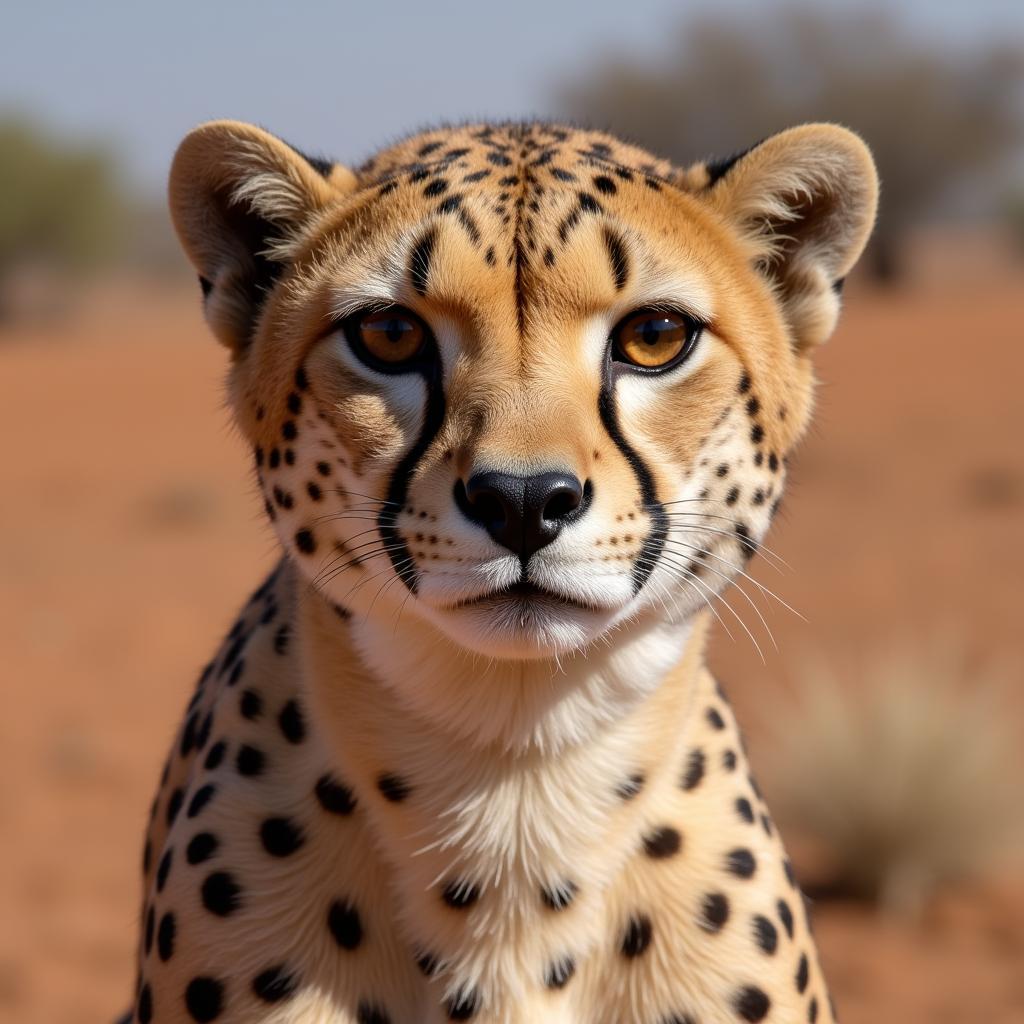Exploring the Vibrant World of African Flower Chafers
African Flower Chafers are a captivating group of beetles renowned for their striking iridescent colors and close association with flowers. These insects, belonging to the Cetoniinae subfamily of the Scarabaeidae family, play a crucial role in pollination across the diverse ecosystems of Africa. They are a testament to the continent’s rich biodiversity and offer a fascinating glimpse into the intricate relationships within the natural world.
The Beauty and Diversity of African Flower Chafers
African flower chafers are a feast for the eyes, displaying a remarkable array of colors and patterns. Their iridescent exoskeletons shimmer with metallic greens, blues, reds, and golds, often in intricate combinations. This iridescence isn’t due to pigments but rather to the microscopic structure of their exoskeletons, which refracts light in a dazzling display. The diversity within this group is astounding, with over 4,000 species found across the continent, each boasting unique characteristics and adaptations. From the emerald green Stephanorrhina guttata to the fiery red Mecynorhina ugandensis, African flower chafers are a testament to the power of natural selection and adaptation. Their beauty has also made them popular among collectors and enthusiasts worldwide.
Habitat and Distribution: Where to Find African Flower Chafers
African flower chafers are widely distributed across Sub-Saharan Africa, inhabiting a variety of ecosystems, from lush rainforests to savannas and woodlands. They are particularly abundant in areas with a high diversity of flowering plants, as these provide their primary food source. Some species are highly specialized, feeding on the nectar and pollen of specific plant families, while others are more generalist in their feeding habits. Their distribution patterns often reflect the distribution of their preferred host plants, highlighting the intricate ecological relationships between these insects and the flora of Africa. Certain species are even endemic to specific regions or mountain ranges, adding to the unique biodiversity of these areas.
Life Cycle and Behavior of African Flower Chafers
The life cycle of an African flower chafer typically involves four stages: egg, larva, pupa, and adult. The larvae, known as grubs, are typically found in decaying wood or leaf litter, where they feed on organic matter. The pupal stage occurs within a protective cocoon, and the adult beetle emerges after several weeks or months, depending on the species and environmental conditions. Adult African flower chafers are diurnal, meaning they are active during the day. They are often seen buzzing around flowers, feeding on nectar and pollen. Their strong flight capabilities allow them to cover considerable distances in search of food and mates.
What do African flower chafers eat?
African flower chafers primarily feed on nectar and pollen from a variety of flowers. They are important pollinators, transferring pollen between plants as they feed. Some species also consume fruit and sap.
The Role of African Flower Chafers in Pollination
African flower chafers are essential pollinators in many African ecosystems. As they move from flower to flower in search of nectar and pollen, they inadvertently transfer pollen grains, facilitating plant reproduction. Their hairy bodies are particularly well-suited for carrying pollen, making them effective pollinators for a wide range of plant species. The mutualistic relationship between these beetles and the plants they pollinate is a prime example of the intricate connections within African ecosystems. Their decline in certain areas can have cascading effects on plant populations and overall biodiversity.
Conservation Concerns and Threats to African Flower Chafers
While many African flower chafer species are thriving, some face increasing threats due to habitat loss, pesticide use, and climate change. Deforestation and agricultural expansion are destroying their natural habitats, while pesticides can have devastating impacts on their populations. Climate change, with its associated shifts in temperature and rainfall patterns, is also posing challenges to these insects, affecting their life cycles and food sources. Conservation efforts are crucial to protect these vital components of African ecosystems.
“The vibrant colors of African flower chafers are not just for show. They serve as important signals for mating and communication within their complex social structures.” – Dr. Khadija Mohamud, Entomologist specializing in African beetle diversity.
Conclusion: Appreciating the Jewels of African Biodiversity
African flower chafers are more than just beautiful insects; they are vital components of African ecosystems, playing crucial roles in pollination and contributing to the continent’s rich biodiversity. Understanding their biology, behavior, and the threats they face is crucial for their conservation and the preservation of the intricate ecosystems they inhabit. Let’s continue to explore and appreciate these jewels of the African natural world.
FAQ
-
Are African flower chafers dangerous? No, African flower chafers are not considered dangerous to humans. They do not bite or sting.
-
What is the lifespan of an African flower chafer? The lifespan of an adult African flower chafer varies depending on the species, but it is generally a few months.
-
How many species of African flower chafers are there? There are over 4,000 known species of African flower chafers.
-
Where can I see African flower chafers? African flower chafers are found throughout Sub-Saharan Africa, particularly in areas with abundant flowering plants.
-
What is the role of African flower chafers in the ecosystem? They are important pollinators for many plant species.
-
Are African flower chafers endangered? While not all species are endangered, some face threats due to habitat loss and climate change.
“Protecting the habitats of African flower chafers is essential for maintaining the delicate balance of African ecosystems. These insects are integral to the health and resilience of the continent’s unique flora.” – Professor Adebayo Olufemi, Conservation biologist focused on African biodiversity.
Need more support? Contact us 24/7: Phone: +255768904061, Email: [email protected] Or visit us at: Mbarali DC Mawindi, Kangaga, Tanzania.

